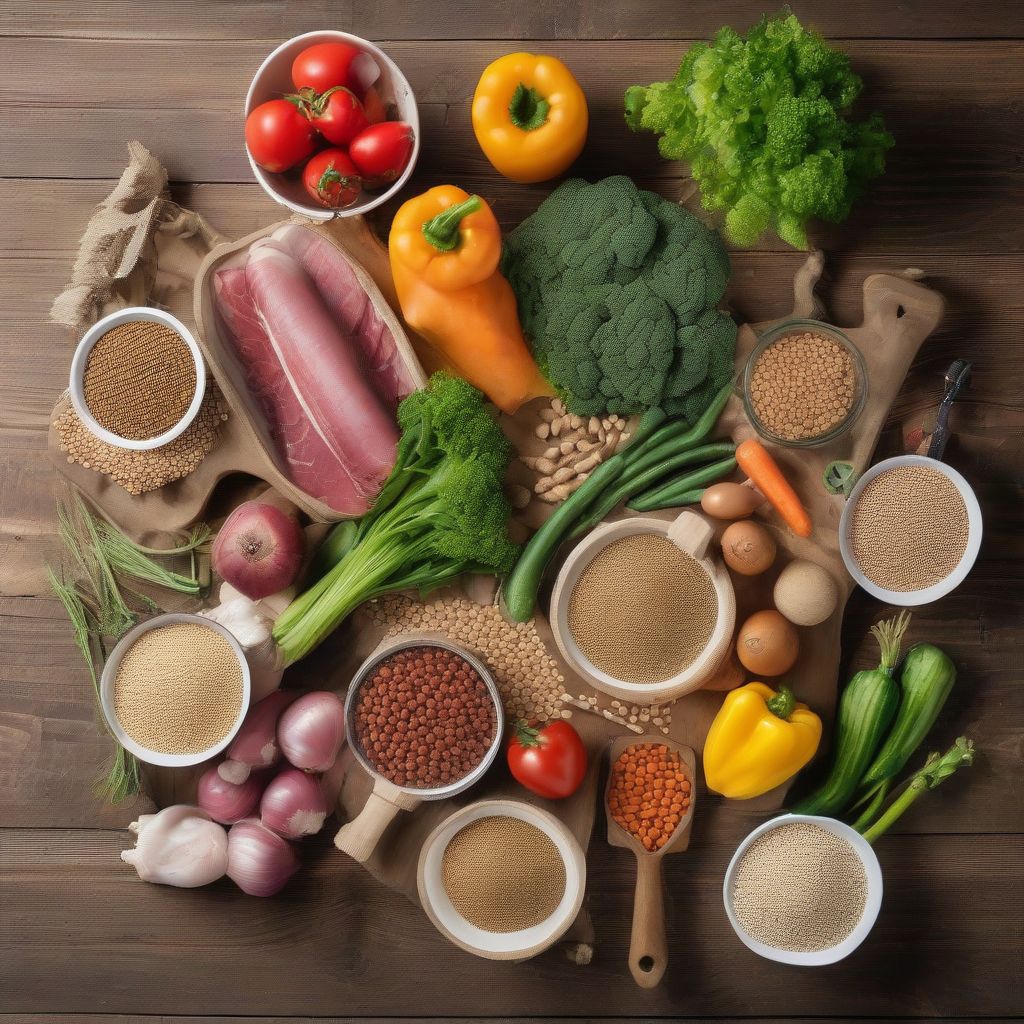Have you ever considered what goes into your pet’s food bowl? It’s not always a pretty picture. Conventional pet food production contributes to environmental damage, from deforestation for cheap fillers to the carbon footprint of mass production and transportation. But what if you could nourish your furry friend while treading lightly on the planet?
This guide dives deep into the world of homemade, eco-friendly pet food. We’ll explore how you can create delicious, nutritious meals for your pet that are not only good for them but also kinder to Mother Earth.
Why Choose Eco-Friendly Pet Food?
Before we jump into recipes, let’s understand why making the switch matters. Choosing eco-friendly pet food options, whether homemade or commercially produced, offers numerous benefits:
- Reduced Carbon Pawprint: Conventional pet food relies heavily on animal agriculture, a major contributor to greenhouse gas emissions. By choosing sustainably sourced ingredients and reducing meat consumption, you can significantly shrink your pet’s environmental impact.
- Minimized Chemical Exposure: Many commercial pet foods contain artificial colors, flavors, and preservatives that may have long-term health implications for your pet. Making food at home gives you complete control over the ingredients, ensuring they are free from harmful additives.
- Less Waste: Homemade pet food allows you to minimize packaging waste generated by store-bought options.
- Improved Pet Health: By using fresh, whole ingredients, you provide your pet with optimal nutrition, potentially boosting their energy levels, improving digestion, and enhancing their overall well-being.
Getting Started: Essential Considerations
Crafting eco-friendly pet food requires a shift in mindset, moving away from convenience towards conscious choices. Here’s what to keep in mind:
1. Consult Your Veterinarian
Before making any drastic changes to your pet’s diet, it’s crucial to consult with your veterinarian. They can assess your pet’s nutritional needs based on their breed, age, activity level, and any existing health conditions.
2. Focus on Balanced Nutrition
Just like humans, pets require a balance of protein, carbohydrates, fats, vitamins, and minerals.
- Protein: Choose sustainably sourced proteins like poultry, fish, or eggs. Consider incorporating plant-based protein sources like lentils or chickpeas.
- Carbohydrates: Opt for whole grains like brown rice, quinoa, or oats, providing slow-releasing energy.
- Fats: Healthy fats from sources like fish oil, flaxseed oil, or coconut oil are essential for a healthy coat and skin.
3. Source Ingredients Responsibly
The beauty of homemade pet food lies in knowing exactly where your ingredients come from:
- Choose Local: Whenever possible, source ingredients locally from farmers markets or ethical butchers. This reduces transportation emissions and supports local businesses.
- Consider Organic: Opting for organic ingredients where feasible reduces your pet’s exposure to pesticides and herbicides.
- Explore Sustainable Options: Consider incorporating insect protein, a highly sustainable and nutrient-rich protein source, into your pet’s diet.
 Eco-Friendly Pet Food Ingredients
Eco-Friendly Pet Food Ingredients
Eco-Friendly Pet Food Recipes
With a solid understanding of the principles, let’s dive into some simple yet delicious recipes to get you started:
Recipe 1: Simple Chicken and Veggie Delight
This recipe is a great starting point for dogs of all sizes and is packed with essential nutrients.
Ingredients:
- 1 pound boneless, skinless chicken breast, diced
- 1 cup cooked brown rice
- 1 cup mixed vegetables (carrots, peas, green beans), chopped
- 1 tablespoon olive oil
- 1 teaspoon fish oil
Instructions:
- In a large pan, heat the olive oil over medium heat.
- Add the diced chicken and cook until browned on all sides.
- Stir in the cooked brown rice, mixed vegetables, and fish oil.
- Cook for another 5 minutes, stirring occasionally, until heated through.
- Let cool completely before serving.
Recipe 2: Savory Salmon and Sweet Potato Medley
This recipe is rich in omega-3 fatty acids, perfect for a shiny coat and healthy skin.
Ingredients:
- 1 pound boneless, skinless salmon fillet, cooked and flaked
- 1 cup cooked sweet potato, mashed
- 1/2 cup cooked green lentils
- 1 tablespoon coconut oil
- 1 teaspoon ground flaxseed
Instructions:
- In a large bowl, combine the cooked salmon, mashed sweet potato, and cooked lentils.
- Add the coconut oil and ground flaxseed.
- Mix thoroughly until all ingredients are well combined.
- Serve at room temperature.
Tips for Success
Here are a few additional tips to ensure your homemade eco-friendly pet food journey is a success:
- Start Slowly: Introduce the new food gradually, mixing it with your pet’s current food to prevent digestive upset.
- Monitor Your Pet: Observe your pet closely for any changes in their health, behavior, or stool after switching to homemade food.
- Adjust Portions: Every pet is unique. Adjust the portion sizes based on your pet’s individual needs and activity level.
- Storage: Store any leftover pet food in airtight containers in the refrigerator for up to 3 days.
[amazon bestseller=”eco-friendly pet food containers”]
Conclusion
Making the switch to eco-friendly homemade pet food is a rewarding journey that benefits both your furry companion and the planet. By choosing sustainable ingredients and preparing meals with love, you’re providing your pet with optimal nutrition while minimizing your environmental impact. Remember to consult with your veterinarian to ensure your pet’s dietary needs are met.
What are your thoughts on making your own eco-friendly pet food? Share your experiences and recipes in the comments below!
